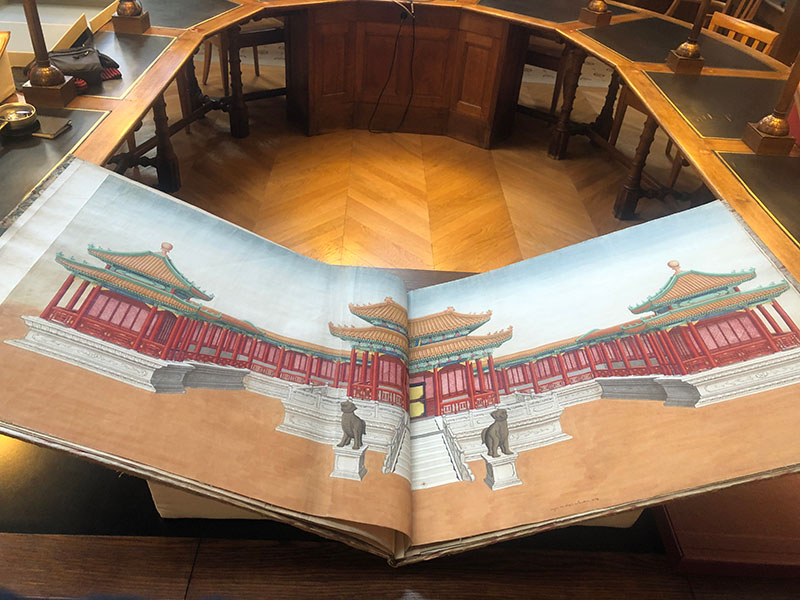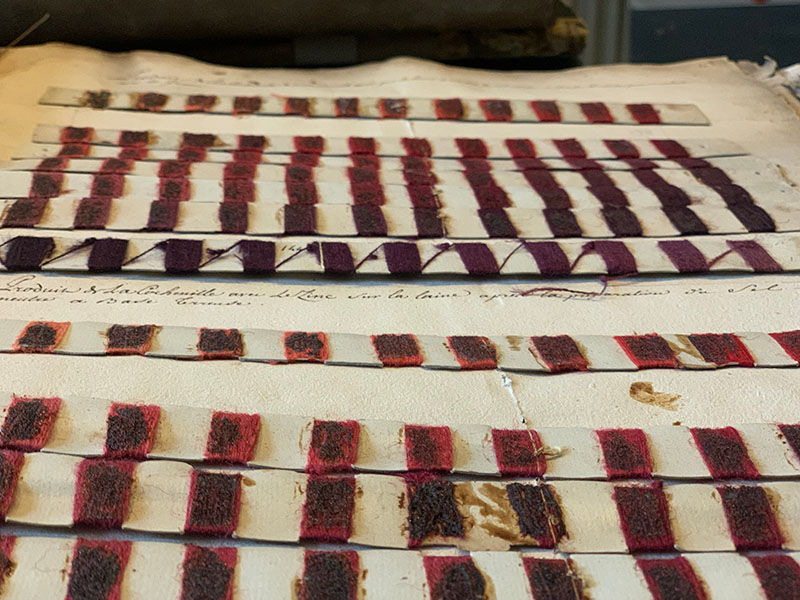Other Colors: Chroma, Chemistry, and the Orient in 19th-Century French Painting
by Delanie Linden
In my dissertation chapter “Chevreul, Color Juxtaposition, & the ‘Flat Tints’ of Chinese Paintings,” I examine the French reception of Chinese paintings which undergirded the construction of tapestries at the well-known Gobelins Manufactory in Paris between 1800 to 1839.
From the 17th century onwards, the arts of painting and weaving were enmeshed at the Gobelins. In the early 19th century, French colorant chemists in the textile industry looked to painting—and specifically Chinese painting—to develop new scientific theories and to improve dyestuffs manufacture. French artists were similarly inspired by imported textiles and paintings to experiment with different modes of painting handling and color harmonies.
With sincere gratitude to the selection committee of the Decorative Arts Trust and their support of my project, I conducted archival research in Paris from January to March 2022. Examining sketchbooks, notes, paintings, and color swatches in person was not only invaluable—but also transformative—to the substantiation of my thesis. Prior to visiting France, I had two hypotheses: first, that the production of textiles and oil paintings shared common technologies and concerns for long-lasting and vivid colorants; and, second, that both methods in 19th-century France were shaped by the vividly contrasting hues of “Oriental” material culture. Orientalist painters, such as by painter Jean-Auguste-Dominique Ingres, not only depicted objects from China, India, and the Ottoman Empire in their scenes, but they also experimented with new modes of color application modeled by imported woven carpets, saturated wallpaper, and watercolors, among others.
During my three-month research trip, I discovered that Chinese export paintings were fundamental to the historical relationship between tapestry-making and painting in France. From the late 18th to the early 19th century, imported Chinese paintings were rapidly collected and consumed in Paris. The saturated chroma and color juxtaposition of Chinese art shaped the color theories of Michel-Eugène Chevreul, chemist and director of the Gobelins from 1824 to 1885, who encouraged both French tapissiers and painters to adopt the colorism of China.
As I argue, 19th-century French textile and painting techniques depended on the improvement of local colorant chemistry at the metropole. But such innovations were importantly indebted to—and fundamentally shaped by—the brilliant hues of the “Orient.”
Delanie Linden is a 5th-year doctoral candidate in Art History at MIT.
About The Decorative Arts Trust Bulletin
Formerly known as the "blog,” the Bulletin features new research and scholarship, travelogues, book reviews, and museum and gallery exhibitions. The Bulletin complements The Magazine of the Decorative Arts Trust, our biannual members publication.
Click Images to Enlarge
Did you know that clicking on the images in Bulletin posts will allow you to get a closer look? Simply click on an image, and a larger version will open in a pop-up window.










